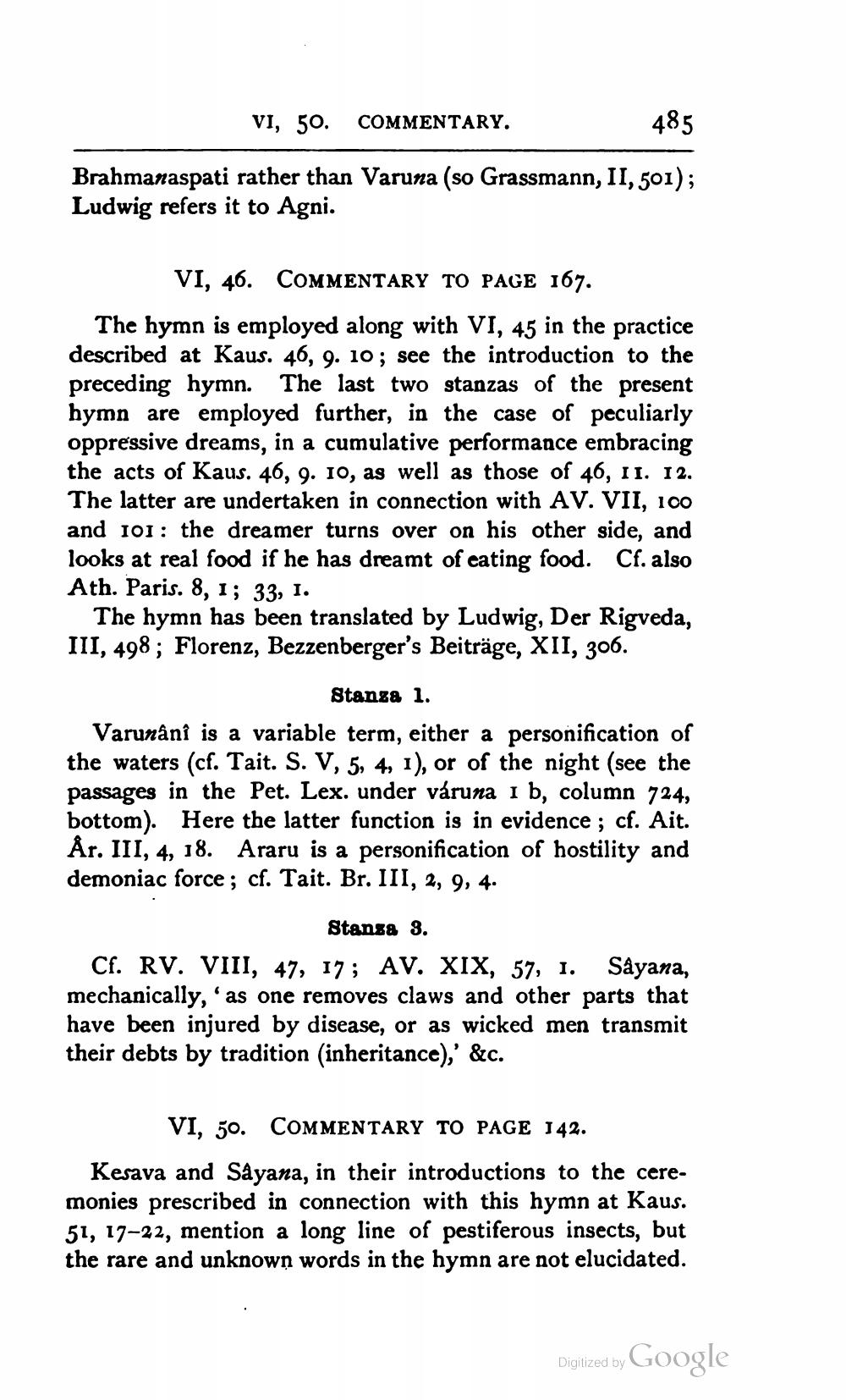________________
VI, 50. COMMENTARY.
485
Brahmanaspati rather than Varuna (so Grassmann, II, 501); Ludwig refers it to Agni.
VI, 46. COMMENTARY TO PAGE 167. The hymn is employed along with VI, 45 in the practice described at Kaus. 46, 9. 10; see the introduction to the preceding hymn. The last two stanzas of the present hymn are employed further, in the case of peculiarly oppressive dreams, in a cumulative performance embracing the acts of Kaus. 46, 9. 10, as well as those of 46, 11. 12. The latter are undertaken in connection with AV. VII, 100 and 101: the dreamer turns over on his other side, and looks at real food if he has dreamt of eating food. Cf. also Ath. Paris. 8, 1; 33, 1.
The hymn has been translated by Ludwig, Der Rigveda, III, 498; Florenz, Bezzenberger's Beiträge, XII, 306.
Stanza 1. Varunânî is a variable term, either a personification of the waters (cf. Tait. S. V, 5, 4, 1), or of the night (see the passages in the Pet. Lex. under váruna i b, column 724, bottom). Here the latter function is in evidence ; cf. Ait. År. III, 4, 18. Araru is a personification of hostility and demoniac force ; cf. Tait. Br. III, 2, 9, 4.
Stansa 3. Cf. RV. VIII, 47, 17; AV. XIX, 57, 1. Sayana, mechanically, as one removes claws and other parts that have been injured by disease, or as wicked men transmit their debts by tradition (inheritance),' &c.
VI, 50. COMMENTARY TO PAGE 142. Kesava and Sayana, in their introductions to the ceremonies prescribed in connection with this hymn at Kaus. 51, 17-22, mention a long line of pestiferous insects, but the rare and unknown words in the hymn are not elucidated.
Digized by Google




